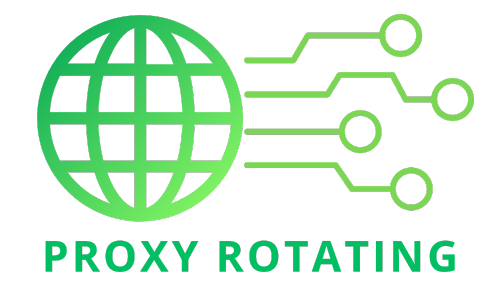Blockchain is a technology for storing and transmitting information in a chain of blocks linked and expanded over time, each containing information about several transactions. One notable feature of blockchain is “transaction fees,” which are applied to encourage miners (in the PoW model) or validators (in the PoS model) to contribute computing power or assets to maintain the system.
However, it is often claimed that a blockchain carries no transaction cost. This concept applies to blockchains without transaction fees, thereby removing user cost barriers but raising questions about the system’s maintenance and security. This article will delve deeper into the transaction fee structure in blockchain, compare it with traditional payment systems, and explore the potential of blockchain in reshaping the future of digital transactions.
Understanding transaction fees in blockchain networks
Blockchain transaction costs are a fundamental aspect that users and developers must consider. These costs are not fixed and can vary significantly across blockchain networks and under different network conditions. Here’s an overview of the factors that influence transaction costs and how they manifest in blockchain ecosystems:
- Network congestion
How It Affects Costs: The more transactions waiting to be processed, the more competition there is to get them included in the next block. Users may pay higher fees to prioritize their transactions, increasing average transaction fees during peak times.
Example Networks: Ethereum is known for its congestion issues, especially during high-demand periods caused by popular decentralized applications or large-scale token sales.
- Consensus mechanisms
Proof of Work (PoW): Networks like Bitcoin and Ethereum (before they transitioned to PoS with Ethereum 2.0) use PoW, which requires miners to solve complex mathematical problems. The energy and computational power required contribute to the cost, part of which is passed on to users as transaction fees.
Proof of Stake (PoS) and Variants: PoS and its variants (Delegated PoS, Leased PoS, etc.) often result in lower transaction fees since they require less energy and computational power, focusing on the amount of cryptocurrency held and staked by validators.
- Smart contract complexity
Impact: In networks supporting intelligent contracts, like Ethereum, the complexity of a contract can significantly affect transaction costs. Complex contracts require more computational resources to execute, increasing the transaction fees.
Example: Deploying or interacting with smart contracts on Ethereum consumes “gas,” the amount of gas required increases with contract complexity.
- Block size and Block time
How It Affects Costs: Blockchains with smaller block sizes or longer block times can process fewer transactions per second, which may lead to higher fees during high demand. Conversely, larger block sizes or shorter block times can accommodate more transactions, potentially lowering costs.
Example Networks: Bitcoin Cash increased its block size to allow more transactions per block, aiming to reduce transaction fees compared to Bitcoin.
- Layer 2 Solutions
Purpose: Layer 2 solutions, like Lightning Network for Bitcoin and various scaling solutions for Ethereum (e.g., rollups), are designed to reduce transaction fees. They process transactions off the main blockchain (off-chain) and later settle the net results on-chain, significantly lowering user costs.
Impact: These solutions can facilitate microtransactions and high-frequency trading by minimizing transaction fees, making blockchain technology more practical for everyday transactions and applications requiring high throughput.
Understanding transaction costs is crucial for users looking to minimize fees and developers designing applications on blockchain networks. By carefully choosing the suitable blockchain or layer two solution based on the specific needs of an application (e.g., transaction frequency, speed, cost-efficiency), stakeholders can significantly optimize operational costs and user experience
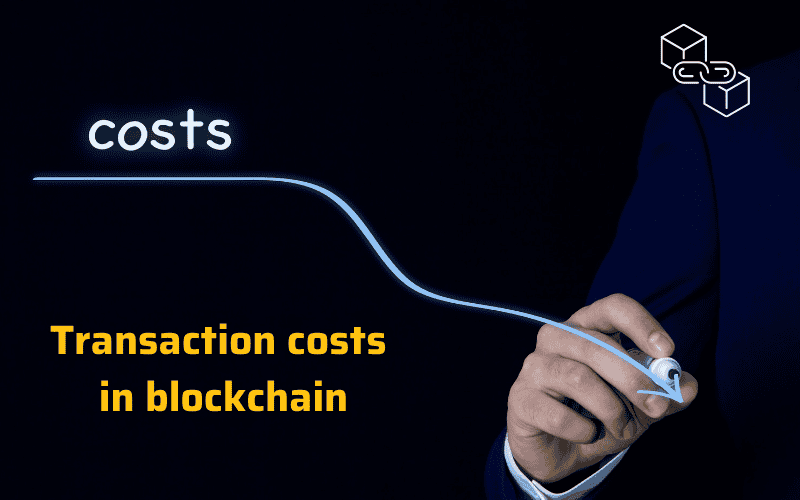
Does blockchain have transaction costs?
Yes, blockchain typically involves transaction costs, often transaction fees. These fees are a vital component of most blockchain ecosystems for several reasons:
- Compensation for validators or miners
Transaction fees compensate the network participants (miners in Proof of Work systems, validators in Proof of Stake systems) for the computational power and energy expended in processing transactions and securing the network. This compensation mechanism encourages participants to act honestly and maintain the network’s integrity.
- Network resource allocation
In a blockchain, computing resources are finite. Transaction fees help manage the demand for these resources by prioritizing transactions. Users willing to pay higher fees can have their transactions processed more quickly, which is especially relevant during periods of high network congestion.
- Prevention of spam attacks
Without transaction fees, the network could be easily overwhelmed by many low-value or spam transactions, leading to denial-of-service attacks. Fees act as a deterrent against such activities by making it costly to flood the network with transactions.
- Economic model sustainability
For blockchains that do not have a perpetual block reward (like Bitcoin, which halves its block reward approximately every four years), transaction fees become increasingly crucial for ensuring the network’s economic sustainability. Over time, as block rewards decrease, transaction fees will constitute a more significant portion of the compensation for network participants.
Variability of transaction costs
It’s important to note that the cost of transactions can vary widely across different blockchain networks and even within the same network over time, depending on factors such as network congestion, the complexity of the transaction (especially for smart contracts), and the chosen transaction speed.
While most blockchains have transaction costs, newer or less conventional platforms might experiment with alternative models to reduce or eliminate transaction fees for specific use cases, aiming to increase accessibility or efficiency. However, these models must also find ways to sustain the network and ensure its security and reliability without the traditional fee structure. Furthermore, it is often claimed that a blockchain carries no transaction cost in these models, although such systems’ practical implementation and sustainability remain under scrutiny.
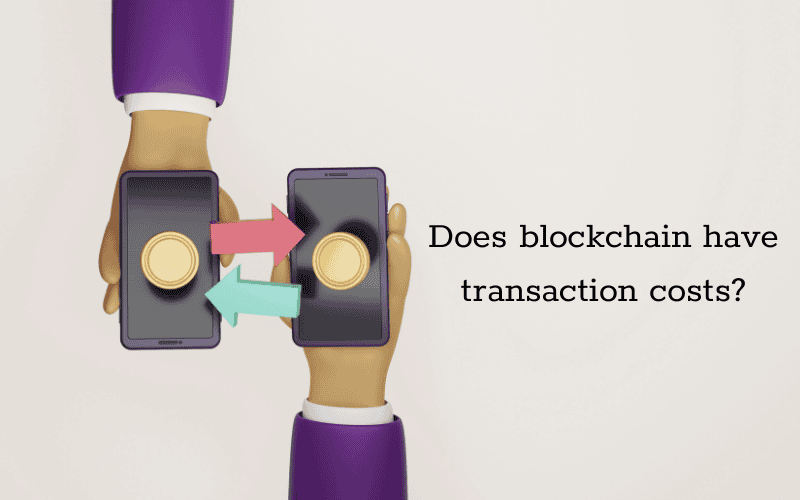
Reasons why a blockchain carries no transaction cost
Some blockchains aim to eliminate transaction costs for a few key reasons, which are closely tied to the unique features and benefits of blockchain technology:
The decentralized architecture of blockchain
Direct transactions: Blockchain’s decentralized nature allows for direct peer-to-peer transactions, removing the need for traditional centralized intermediaries. This reduction in the transaction chain can lower or eliminate costs associated with these middlemen.
Eliminating intermediaries in financial transactions
Cost savings: By removing intermediaries, blockchains reduce the layers of processing and fees typically associated with transactions. This can lead to a system where a blockchain carries no transaction cost and minimal or non-existent transaction costs.
Using consensus algorithms to verify transactions
Efficient verification: Blockchain networks validate transactions using various consensus algorithms (like Proof of Stake, Delegated Proof of Stake, or others less resource-intensive than Proof of Work). These mechanisms require less energy and computational resources, potentially reducing the need to charge fees for transaction processing.
Boosting efficiency and reducing operational costs
Automated Processes: Automating transaction verification and the inherent efficiency of blockchain’s distributed ledger technology can lower operational costs. Sometimes, these savings can be passed on to users through zero transaction fees.
Additional considerations
Network support and incentives: Networks without transaction fees might find alternative methods to support network operations and incentivize validators or miners. This can include mechanisms like inflationary token issuance. New tokens are created to reward validators or transaction fee models that only apply under specific conditions to ensure network sustainability without imposing regular fees on all transactions.
Eliminating transaction costs is a strategic choice that reflects a blockchain’s priorities, such as broadening access, increasing transaction speeds, or fostering more widespread adoption of blockchain technology. However, these networks must carefully balance eliminating fees with maintaining network security, incentivizing participants, and ensuring long-term sustainability.

Comparing blockchain to traditional payment systems
Comparing blockchain with traditional payment systems reveals several key differences and potential advantages of using blockchain technology for transactions. Here’s a closer look at these differences:
| Characteristics | Blockchain | Traditional payment systems |
| Transaction speed | Depending on the blockchain, transactions can be significantly faster, especially for cross-border payments. Some blockchains can process transactions in seconds or minutes. | Cross-border transactions can take days to settle due to the involvement of multiple intermediaries and banking systems. |
| Transaction cost | It is often lower, especially for international transactions, since it eliminates many intermediaries and administrative costs. However, fees vary widely based on network congestion and the specific blockchain used. | It can be high, particularly for international transfers, due to fees charged by banks and other financial institutions involved in the transaction process. |
| Transparency and security | Offers high levels of transparency, as transactions are recorded on a public ledger. Security is also vital due to cryptographic techniques and decentralized validation processes. | Transparency varies by institution, and while security is a priority, centralized points of failure can make these systems vulnerable to fraud and hacking. |
| Accessibility | Accessible to anyone with an internet connection, potentially democratizing access to financial services, especially in underbanked regions. | Requires access to bank accounts or financial services, which can exclude significant portions of the global population. |
| Intermediaries | Operates with fewer or no intermediaries, with transactions occurring directly between users on the network. | Relies on a network of intermediaries, including banks, clearinghouses, and payment processors, each adding time and cost to transactions. |
| Regulatory Oversight | The regulatory environment is still evolving, with varying degrees of oversight across countries. This can lead to uncertainty but also offers the potential for innovation in compliance and governance. | Heavily regulated, providing consumer protections and imposing restrictions and compliance costs on participants. |
| Reversibility of transactions | Transactions are generally irreversible, which can reduce fraud but also means errors cannot be easily corrected. | Transactions can often be reversed or contested through processes like chargebacks, providing a safety net for consumers and creating fraud opportunities. |
Blockchain technology offers a promising alternative to traditional payment systems, with advantages in speed, cost, and accessibility. However, regulatory uncertainty, scalability, and the irreversible nature of transactions must be addressed. As blockchain technology evolves and matures, it may increasingly complement or replace aspects of traditional financial systems, especially in applications with the most pronounced benefits.
Examples of blockchains carry no transaction cost.
Blockchain applications with little to no transaction costs are growing in popularity as they offer a compelling alternative to traditional systems where fees can accumulate quickly. Here are examples within critical areas like payment systems, decentralized exchanges, and supply chain management:
Blockchain-enabled payment systems
Nano: Designed for fast and free transactions, Nano uses a unique block-lattice structure, allowing each account to have its blockchain, which results in near-instant transactions and zero fees.
Stellar (for certain operations): While Stellar does impose minimal fees to prevent spam, the overall cost of transactions is extremely low. It supports microtransactions and cross-border transfers with negligible fees compared to traditional banking systems.
Decentralized exchange platforms (DEX)
Waves Exchange: Waves offers a platform where users can create and trade custom tokens with minimal fees. It uses a leased proof-of-stake mechanism that can cheaply handle a high volume of transactions.
Loopring: Utilizing zkRollups, Loopring allows for high-throughput, low-cost trading on Ethereum. It batches transfers and swaps off-chain before finalizing them on the Ethereum blockchain, significantly reducing transaction costs.
Blockchain applications in supply chain applications
VeChain targets the supply chain and logistics sector, offering a dual-token setup where the cost of blockchain operations can be predictable and relatively low. This enhances the adoption of blockchain for tracking and verification without significant transaction fees.
OriginTrail: Designed to make supply chains work together, OriginTrail doesn’t eliminate fees but significantly reduces them by optimizing data exchange and ensuring interoperability between different supply chains on a decentralized network.
Considerations
While these applications strive to minimize transaction costs, it’s essential to understand the underlying mechanisms that allow them to do so. For example, some may absorb the costs differently, subsidize them through other means, or structure the network to reduce the need for transaction fees inherently.
The approach to handling transaction costs can significantly impact the network’s sustainability, scalability, and security. As such, these systems continuously evolve to balance minimizing fees and maintaining a robust, secure, and efficient network.
These examples highlight the diverse ways blockchain technology is applied beyond mere financial transactions. It is paving the way for innovative applications that can operate without transaction costs, challenging traditional fee-based structures.

The potential of blockchain to change the global payment system
Blockchain technology harbors the potential to revolutionize the global payment system significantly. Its foundational characteristics—decentralization, security, transparency, and efficiency—align with the critical needs of a modern financial ecosystem. Here’s how blockchain could reshape global payments:
Increasing efficiency and reducing payment costs
Blockchain can streamline transaction processes, removing the need for intermediaries that often contribute to higher costs and longer processing times. By facilitating peer-to-peer transactions, blockchain reduces the layers of communication and approval, thus lowering transaction fees and speeding up settlement times. This is especially beneficial for international transfers, where traditional banking systems might take several days to process a transaction, involving multiple banks and possibly incurring high fees. Blockchain transactions can occur in minutes, regardless of the geographical distance between parties.
Delivering financial services to all
One of blockchain’s most profound impacts is its ability to extend financial services to the “unbanked” or “underbanked” populations—individuals who lack access to traditional banking or financial services. Blockchain-based financial services can offer secure and direct transactions, savings, loans, and complex financial products without a bank account through mobile devices, which are increasingly widespread even in developing countries. This democratization of financial services could spur economic growth and financial inclusion globally.
Creating a more transparent and secure payment system
Blockchain’s inherent transparency, where all transactions are recorded on a public ledger, offers unprecedented transaction visibility and auditability, reducing the risk of fraud and corruption. This transparency is balanced with advanced cryptographic techniques that ensure transaction details are secure and accessible only by authorized parties, enhancing privacy. Moreover, the immutable nature of blockchain records means that once a transaction is added to the ledger, it cannot be altered or deleted, which adds a layer of security not present in many traditional financial systems.
Challenges and considerations
While the potential is vast, there are challenges to the widespread adoption of blockchain in global payments, including regulatory hurdles, technical standards, and concerns about scalability and energy consumption (particularly with Proof of Work blockchains). Nevertheless, ongoing innovations in blockchain technology, such as developing more energy-efficient consensus mechanisms and scaling solutions, are addressing these issues.
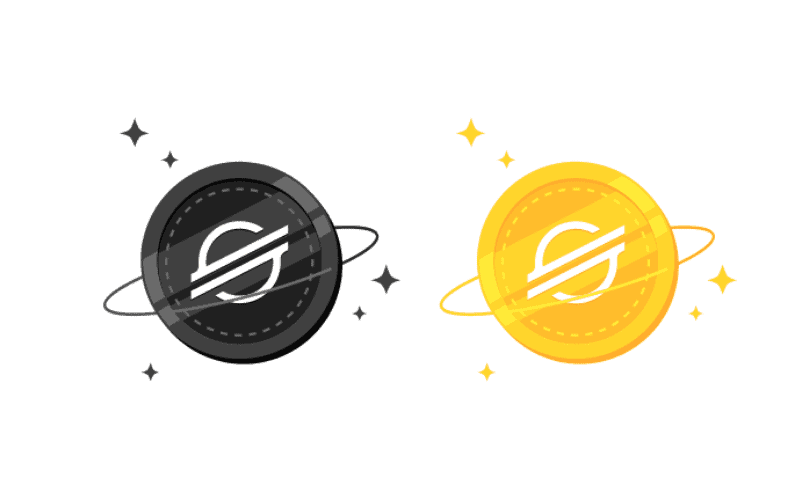
Blockchain solutions for the transaction cost issue
Blockchain technology presents innovative solutions to the transaction cost issue, making digital transactions more efficient and accessible. It is sometimes perceived that “a blockchain carries no transaction cost,” an idea that highlights the potential for meager fees under specific blockchain designs. Here are several strategies and technologies developed within the blockchain ecosystem to mitigate high transaction costs:
- Layer 2 scaling solutions
Layer 2 protocols operate on top of the base blockchain (Layer 1) to increase transaction throughput and reduce costs without sacrificing security. Examples include:
Lightning network for Bitcoin: Facilitates fast and cheap transactions by enabling off-chain transactions.
Rollups (Optimistic and zkRollups) for Ethereum: Aggregate multiple transactions into a single transaction on the main blockchain, significantly reducing fees.
- Proof of Stake (PoS) and other consensus methods
Transitioning from energy-intensive Proof of Work (PoW) to PoS or other consensus mechanisms like Delegated Proof of Stake (DPoS) or Proof of Authority (PoA) reduces the computational effort needed to validate transactions, thereby lowering costs. Ethereum’s upgrade to Ethereum 2.0 is a prime example, aiming to improve scalability and reduce transaction fees.
- Sharding
Sharding divides the blockchain into smaller, manageable pieces (shards) that can process transactions parallelly. By distributing the load, sharding increases the overall capacity of the blockchain and lowers transaction costs. Ethereum 2.0 plans to implement sharding to enhance its scalability.
- Sidechains
Sidechains are separate blockchains attached to the main blockchain using a two-way peg. They allow transactions to be processed on a secondary chain with potentially different settings for speed and costs, and then the results can be transferred back to the main chain. This can offload the transaction volume from the leading network, reducing costs.
- Blockchain Interoperability
Interoperability solutions like Polkadot and Cosmos enable different blockchains to communicate and transfer value seamlessly. By allowing assets to move across various blockchains, users can choose networks with lower transaction costs for their activities, alleviating congestion and reducing fees on more expensive networks.
- State channels
State channels support off-chain transaction negotiations between parties, with the blockchain only being updated at the beginning and end of the transaction process. This reduces the burden on the leading network, decreasing transaction costs while ensuring security through the underlying blockchain.
- Feeless blockchains
Some blockchains, such as Nano and IOTA, have been designed to operate without transaction fees, using unique consensus mechanisms and network structures. These blockchains support microtransactions, and high-volume use cases where a blockchain carries no transaction cost would be prohibitive.
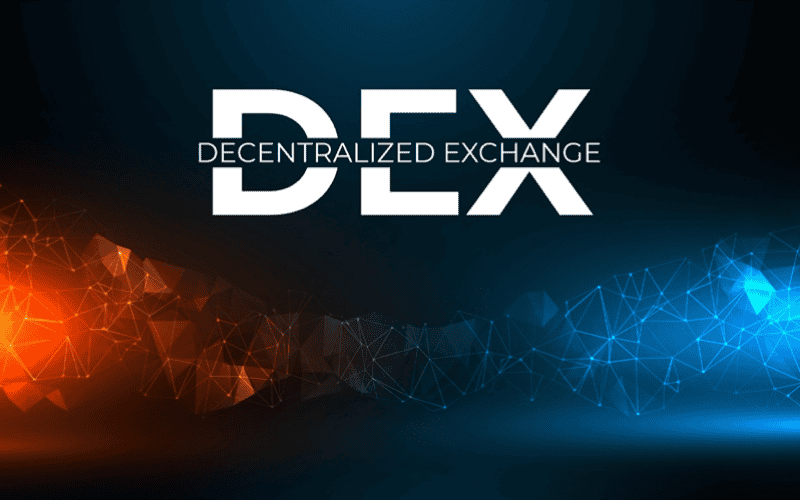
When approaching blockchain, understanding “transaction costs” as well as how “a blockchain carries no transaction cost,” in particular “transaction cost-free” blockchain systems, is an essential factor that helps users assess and choose the platform that meets their needs. The flexible application, from validating transactions at low cost to eliminating transaction fees, opens new doors for using blockchain in various fields, from finance to supply chain management. A transaction fee-free blockchain promises to change the global transaction system in the future. To learn more about blockchain and digital technology, visit https://proxyrotating.com to explore today.
>>> See more:
A blockchain implements which of the following architectures
Course 1 blockchain fundamentals answers
Blockchain security certification
